Kete Kōrero

A MAGAZINE OF THE CATHOLIC DIOCESE OF HAMILTON DECEMBER 2022 - JANUARY 2023
DEC 2022 - JAN 2023
PUBLISHER: Catholic Diocese of Hamilton, New Zealand

DIRECTOR: Alex Bailey alexb@cdh.org.nz
EDITOR: Samuel Harris samuelh@cdh.org.nz
ART DIRECTOR: Taila Burton-Gollop tailabg@cdh.org.nz
PROOFREADING ASSISTANCE: Shona Roberts
WEBSITE: ketekorero.cdh.nz
EMAIL: kete@cdh.org.nz
PHONE: 07 856 6989
POSTAL ADDRESS: PO Box 4353 Hamilton East 3247
ISSN 2357-2221
COVER: NATIONAL MARCH FOR LIFE 2022, WELLINGTON
BACK COVER: SACRED HEART CHAPEL, TOLAGA BAY
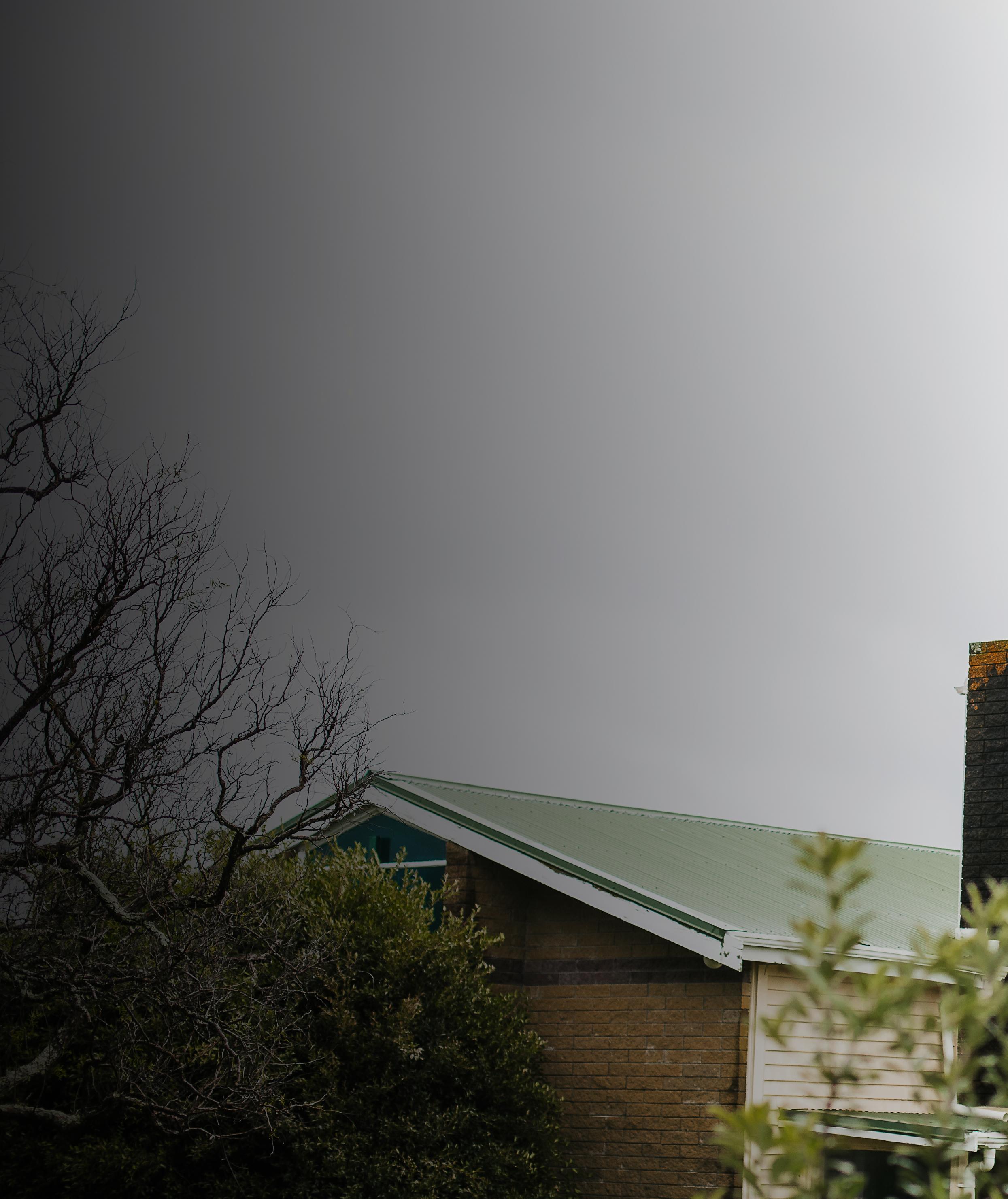
CONTENT PAGE: ST PATRICK’S, TE KAHA
PHOTOS BY TAILA BURTON-GOLLOP

CONTENTS EDITOR’S NOTE 04 QUIZ 05 DECK THEM HALLS / ED. CONDON 06 THE ATRIUM / ROSEMARY ROBERTS 08 CHARIS NATIONAL SERVICE OF COMMUNION / HELEN SMITHSON 09 REACHING OUT / BETTY-ANN KAMP AND CHRIS GRACE 10 NEWS 12 ATAWHAI ASSISI RETIREMENT VILLAGE / TAILA BURTON-GOLLOP 13 SNAPSHOT OF THE HISTORY OF CATHOLIC EDUCATION IN TAIRAWHITI / SISTER MEG HILLS RSJ 14 POETRY AND BEAUTY IN BOTH LYRIC AND MUSIC / SAMUEL HARRIS 18 OUR HIDDEN EAST CAPE GEMS / TAILA BURTON-GOLLOP 20 A POEM AND A PRAYER 22 NGĀ KUPU Ā-KAUPAPA KATORIKA 24 LETTER TO THE EDITOR 25 SAINTS & SOLEMNITIES 26 KIDS’ PAGE 27
EDITOR’S NOTE
SAMUEL HARRIS
I hope your Advent is going well - that it’s both joyful and solemn, both a time of quiet waiting and a time of laughter and celebration. It’s hard to believe that it’s almost
Christmas again.
We have shifted our publication dates for the magazine back a month, thinking that the new dates might line up nicely with the seasons and with the major feasts of the Church’s liturgical year.
What is Advent about, at its core? St Oscar Romero has some thoughts: “Advent should admonish us to discover in each brother or sister that we greet, in each friend whose hand we shake, in each beggar who asks for bread, in each worker who wants to use the right to join a union, in each peasant who looks for work in the coffee groves, the face of Christ. Then it would not be possible to rob them, to cheat them, to deny them their rights. They are Christ, and whatever is done to them Christ will take as done to himself. This is what Advent is: Christ living among us” (December 3, 1978).
Prayer and penance, when we throw ourselves into them and make them a habit, will always reveal the core of things - will always show us Christ alive and present in our daily work, in our families and communities. When we see him there, we should be ready to take up the challenge he puts in front of us to share what we have with those around us.
I wanted to share a few articles (below) that have caught my eye recently. They’re all available online. We’d be interested to hear your thoughts on these or anything else in the magazine: email addresses are in the front cover.
The magazine was delighted to receive some gongs in the recent Australasian Catholic Press Association awards:

Most Improved Publication (judged across three issues from each of the 2020 and 2021 years); Best Content - Education, for our schools supplement in September 2021; and Highly Commended - Best original artwork, for Carmela Nepomuceno’s image of St Joseph from February 2021. A huge thank you to all our contributors - we couldn’t put the magazine together without your generous work.
To you and yours, a peaceful Advent and a Merry Christmas.
The “So What?” Saint by Catherine Addington at faithfull. substack.com
“Sr Ingrid sums [St Rafael Arnaiz] up as “el santo de ‘¿qué más da?’” (That is, “the ‘so what?’ saint.”) “So what if you’re here or there? So what if you’re sick or if you’re healthy?” she goes on. What does it matter? God is the same. His love is the same, and it’s enough. This movie says pretty much the same thing. So what if a person you love - a saint you’ve never met, a God you’re married to, a brother you miss - dwells in heaven rather than on earth? The love has to go somewhere, and mysteriously, it does.”
My mother didn’t know what to say, but she knew what to do by Simcha Fisher at simchafisher.com
“Prayer marked the beginning and end of every day and the beginning and end of everything important she did. … When dementia took her ability to speak and communicate, she could sometimes still pray out loud long after her other words were gone, and I can only imagine that interior prayer lingered with her, as well. Prayer seems to have been the thread that held her life together.”
To Whom Much Has Been Given by Marilyn R. Gardner at plough.com
“Our guests not only filled our house with bodies but with representatives of many troubled countries. A Syrian family interacted with an Israeli family while our Iranian friends connected with Greeks, Ukrainians, and Serbians over turkey, pumpkin pie, and whipped cream. The most memorable moment came as our Israeli friend looked our Syrian friend in the eye. ‘It is nice to meet you,’ he said with deep sincerity. ‘I have only ever seen a Syrian through the eye of a gun.’ It was a holy moment. In our small apartment that I never thought was quite enough, a connection was made.”
04
QUIZ
SIX QUICK CATHOLIC QUESTIONS
1. In what revolution does Pope Francis want us to engage?
a) Revolution of peace b) Revolution of courage
c) Revolution of tenderness d) Revolution of love
2. According to one popular reading, who does the partridge in the carol The Twelve Days of Christmas represent?
3. What one word can precede all these three: number, sin, virtue..

4. How many Holy Days of Obligation are there in the New Zealand liturgical calendar?
5. Under a replica of what famous statue was Ven. Suzanne Aubert buried at Our Lady’s Home of Compassion in Wellington?

6. The apostles appointed a council to assist in distributing food to the poor and widows. How many members worked on this council?
a) 3 b) 7 c) 6 d) 12
6. 7. This story is related in Acts 6.
5. Michelangelo’s Pieta, which depicts Christ in the arms of Mary.
4. Two - Assumption Day and Christmas Day (along with, of course, every Sunday).
“hinge” - something upon which a lot of other elements hang or depend
3. cardinal; the word comes from a word meaning
2. Jesus
1. c) revolution of tenderness
05
DECK THEM HALLS
ED. CONDON

I have been looking forward to breaking out the Christmas decorations this year, despite the inevitable fight it occasions with my wife about how to rearrange the living room to accommodate them.
We’ve both always been big into holiday decorating. At first, like any newly married couple, we were excited to acquire the festive kitsch which would become part of our new family’s seasonal memories, adding to the collection year by year. Later, it was just a thing we did together, and we do it damn well, I don’t mind telling you.
But, I’m not going to lie, the enthusiasm had lessened in recent years: seeing your favourite childhood ornaments on the tree becomes a little bittersweet when you’ve started to believe that you won’t have kids of your own to hand them on to. But this year, after nearly fifteen years of waiting, we have our daughter with us. She’s brought the nostalgia factor roaring back to the Condon Christmas.
Our tree went up last night - I always get it midweek and late at night to avoid the crowds. This year, the plan worked like a treat: the place was empty apart from a hipster couple agonising over some paltry little three-footers as they discussed boba tea and cultural appropriation (I’m just guessing).
Speaking of cultural appropriation, it’s also the time of year when tedious amateur atheists pipe up all over the place to whine, “Akshually, Christmas trees are appropriated pagan symbols, it’s nothing to do with Christmas at all, so there.”
Other internet experts like to make much of the fact that, for all its Dickensian nostalgia, Christmas trees came into the Anglosphere thanks to Albert, royal consort to Queen Victoria.
Now, I’m not here to defend Prince Albert - or any of his many mad ideas, but let’s just get some things clear:
06
Christmas trees are not pagan, and they are not German. They are English, and Christian.
I can google as well as the next person. And you don’t have to actually work very hard to find out that the real story of the first Christmas tree dates back - so far as I can tell - to the eighth century.

Legend has it that St Boniface, an Englishman born in the blessed county of Devon and sent to evangelise the barbarian hordes of northern Germany, heard tell of a mighty oak tree in the area of Hesse. The locals revered it as a kind of living altar to Thor, whom they honoured with sacrifices.
Boniface wasn’t having any of that on his turf. The saint arrived in the town on Christmas Eve (at least according to some versions of the story), seized an axe, and proceeded to chop down the supposedly divinely protected tree.
When Thor’s hammer failed to fall on the saint, the locals found themselves suddenly open to new ideas about God. Legend has it that Boniface catechised them on the spot, pointing to a small evergreen fir tree behind the fallen oak as a sign of eternal life, rather like St Patrick is supposed to have used the shamrock to talk about the Trinity.
Now, maybe this is all just legend. But as far as I can tell, it stands up as well as any of the other nonsense I have read about the supposed pagan origins of cutting down trees at Christmas. So the next time someone starts in about the “pagan” origins of Christmas, grab your axe (for trees, for trees) and set them straight.
Originally published on pillarcatholic.com and reprinted here with kind permission.


ST. BONIFACE FELLING DONAR’S OAK, BERNHARD RODE, 1781. 07
“Christmas trees are not pagan, and they are not German. “
THE ATRIUM


ROSEMARY ROBERTS
We meet in the foyer of the church. It’s been a term since we last met, the catechist (me) having been busy with the sacramental programme in the only time the atrium space has been available. Some of the children have been in the atrium many times, others only a handful; a few are brand new to the space. I welcome the children and we talk briefly about the place we are about to enter, the place specially prepared for them to encounter Jesus, to pray, to learn to know and love him more. I remind the children that quiet voices and careful movements will make it easier for everyone to do this, and, after taking off our shoes, we go upstairs.
Many children know exactly what they want to do over the three mornings we will be in the atrium these holidays, whether it be returning to familiar activities or being introduced to something new. The Baptism and the Eucharist materials in particular are drawing their attention, along with those used to contemplate the parable of the Good Shepherd. Together, we ponder the light of the Paschal candle, that Easter light that comes to us in baptism. Later, I introduce the model altar to the new children, showing them how it is set for Mass. When I light the mini altar candles, the look of wonder and joy on the face of a little boy, not quite three, is the most beautiful thing I have seen and makes all the time and effort that goes into preparing this space and being with the children abundantly worthwhile. The older children have been fascinated by the model vestments of the priest, learning their names and how to put them on the wooden figure. On the third morning, our ever-supportive parish priest shows them the real thing, demonstrating how he vests for Mass. Afterwards, two six-year-old boys, curious about the colours of the liturgy, examine our liturgical calendar and some old Columban calendars to see how the colours change each day or season.
At the end of each session, we gather at the prayer table to give thanks. Our three days are over all too soon, but we are consoled in knowing we are finally able to meet weekly again this term.

To learn more about Catechesis of the Good Shepherd: cgsusa.org | cgsaust.org.au | cgsstpiusxhamilton.wordpress.com Contact Rosemary on 0276999451 or cgsstpiusxhamilton@gmail.com.
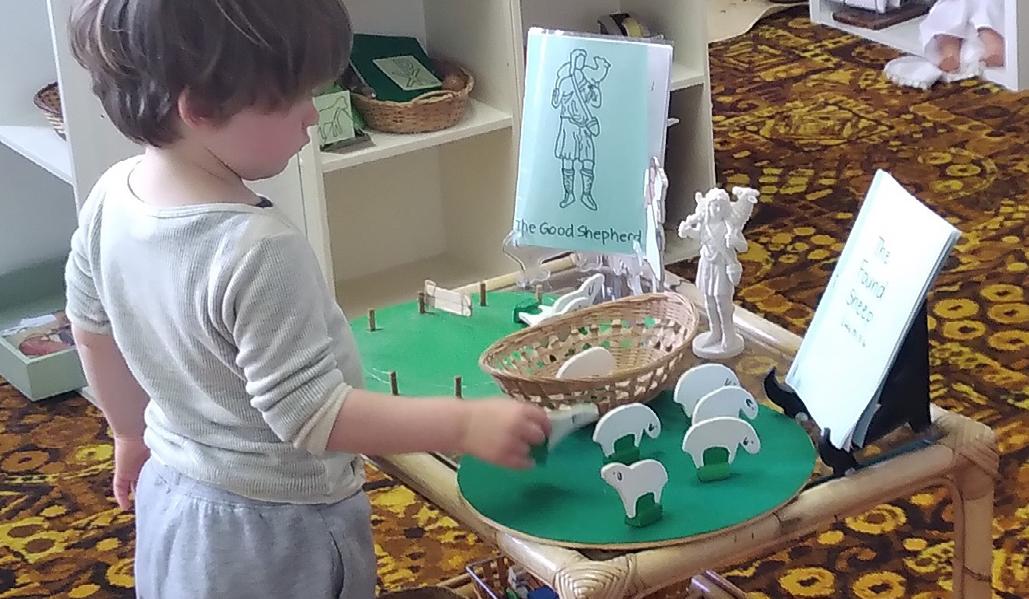 Catechesis of the Good Shepherd is a religious education programme rooted in Scripture and liturgy.
Catechesis of the Good Shepherd is a religious education programme rooted in Scripture and liturgy.
PHOTOS PROVIDED BY CGS PHOTO PROVIDED BY HELEN SMITHSON 08
CHARIS NATIONAL SERVICE OF COMMUNION
HELEN SMITHSON
TheNational Service of Communion CHARIS New Zealand gathered together for the first time in two years, 18-20 November 2022, at the beautiful, peaceful setting of Christine and Bill Kornman’s home in Hamilton. A perfect place for the national leaders or representatives of ministries, groups, and communities - different streams of Catholic Charismatic Renewal - to make new connections and build relationships. Present were leaders from Lamb of God Community, ICPE, KPF, Dove, Joshua, CRANZ, National Prayer Group, and Diocesan Current of Grace Coordinators and also Mons. Frank Eggleton who is appointed by the Bishops Council.
CHARIS - Catholic Charismatic International Service was initiated by Pope Francis and inaugurated at Pentecost 2019. It is a body established by the Holy See through the Dicastery for the Laity, Family and Life. It brings the Charismatic Renewal into the heart of the Church. All baptised receive the Holy Spirit, with all his gifts to enable us to go and share the Good News, at our baptism. Pope Francis initiated this service for the Catholic Charismatic Renewal and asked the CCR “to be a Current of Grace”; to share baptism in the Spirit with all; to serve the poor; and work for Christian unity. Pope Francis desires youth to be leading now.
CHARIS is a service not governance. It is Holy Spirit led, hence there are coordinators at all levels with an international moderator. There is great hope as we move forward in unity, into the new and into being available as the Holy Spirit leads.
Shayne Bennett, Australian coordinator and our present continental and international CHARIS representative, shared Pope Francis’ vision, via Zoom, at our gathering. This helped some to move the concept of CHARIS from head to heart. Leaders are not alone. We are a network.
In early March 2023 the Asia/Oceania Continental CHARIS gathering of national coordinators takes place in Malaysia. This gathering leads into the voting in the first CHARIS International Service of Communion in Rome late 2023.
After being postponed, there is great expectation for the Current of Grace 2023 conference, “Receive Holy Spirit Power”. Cardinal John Dew is giving the opening address and the closing Mass will be celebrated by Archbishop Paul Martin, with Fr John Rea, Robert Falzon and Dr Mary Healy (via live video) being key note speakers. The hope is all the gifts received at baptism will be activated to fulfil our commission to “Go and share the Good News.” Jesus left to go to the Father so the Holy Spirit could come at the first Pentecost and he has never left us.

09
REACHING OUT
BETTY-ANN KAMP AND CHRIS GRACE
We can sometimes think to ourselves that “people who receive food parcels don’t budget properly – they just need to be taught how to budget and this will fix the problem.”
While budgeting advice is often the first initiative undertaken by budget mentors at Catholic Family Support Services (CFSS) the reality is that each situation is different. Family issues may need to be uncovered and resolved before any budgeting programme can be introduced. A high proportion of CFSS’s clients, and their families and whānau, continue to operate under pressure and despair. They tend to experience not only financial hardship
(especially around housing) but also job insecurity, mental health issues, and ongoing family harm and violence. The funding CFSS receives from Common Good Foundation helps alleviate some of the stress and pressures on our most vulnerable people through the provision of effective counselling and associated wrap-around services.
Education of youth who have made bad choices or who have dropped out of schooling was a focus for several front-line charities supported by Common Good Foundation: One Chance (Rotorua), Te Rongopai Community Trust (Hamilton), Hope Rising Farm Charitable

10
Trust (Ngāruawāhia), Youth Encounter Ministries (Te Puke), and Taku Wairua (Morrinsville). Their various programmes help young people build self-esteem and confidence, gain a sense of belonging and connectedness, learn effective goal setting, and participate in pre-employment programs – all great outcomes.

Common Good Foundation has also funded young children through programmes such as KiwiCan, which is offered by the Graeme Dingle Foundation in communities faced with high social deprivation. These children may be exposed to family harm, suicide, or dysfunctional family members. KiwiCan is well regarded, with many school principals noting a marked improvement in social interactions and an increased interest in learning in course participants.

Common Good Foundation has provided financial support to a parish-initiated programme at the Parish of Tongariro Catholic in Taupō: providing three-course meals and fellowship to local people in need. Parish volunteers also delivered multiple loads of firewood to those struggling over winter. In In Gisborne, the foundation backed the newly opened Stella Maris Early Childhood Centre with a grant to help with the set up of the centre. The youth choir at the Parish of St Thomas Aquinas, Tauranga, was also assisted. As part of its outreach, concerts at the local rest homes were particularly welcomed.
There were many other charities supported directly through Common Good Foundation’s 2021 funding round. For more information check out www.commongood.org. nz/support-us-item/previous-recipients
We are all called as Christians to be a companion to others who are struggling on their life journey. It is through our compassion towards others that we can build a better place for all and provide a safe and caring environment so that others may have hope. Common Good Foundation is grateful to all our donors and supporters for your huge generosity over the past year. Your direct support has enabled us to partner with other charities and groups working with families, children, youth, migrants, and other vulnerable peoples throughout the Catholic Diocese of Hamilton. We have helped countless people to not only survive but more importantly to thrive.

11 CGF VAN PROVIDING TRANSPORT FOR OLDER PEOPLE PHOTO PROVIDED BY BETTY-ANN KAMP
NEWS
The Royal Commission of Inquiry into Historical Abuse in State Care and in the Care of Faith-based Institutions is working towards its final report, to be delivered in June 2023.
In October the Responses of Faith-based Institutions to Abuse in Care hearing took place, and several Catholic witnesses appeared and were questioned searchingly by the commissioners. Catholic figures appearing at the commission included Bishop Steve Lowe of Auckland, Bishop Emeritus Pat Dunn, former Auckland bishop (who is currently under a “Vos estis lux mundi” investigation into his handling of a recent clerical sex abuse case in Auckland), Wellington’s bishop Cardinal John Dew, and head of the Mercy Sisters, Sister Sue France.
Te Rōpū Tautoko, the Catholic group set up to work with the commission, says of this recent hearing in its November report, “There was a call for the Catholic Church to re-set its underlying principles of approach, engage with survivors openly and honestly, and consider the new developments that survivors are seeking from all institutions. This will take involvement, engagement, and leadership from many people and decisive action on the part of church leaders.” Transcripts and video of these investigations, and information on the Royal Commission, are available on its website www.abuseincare.org.nz and on the website of Te Rōpū Tautoko, www.tautoko.catholic.org.nz
The National March for Life took place in Wellington this month, on Saturday December 4th.
Over 2,000 people took to the streets of Wellington for the march, to defend the lives of the unborn and the defenseless, including 25 from the Hamilton Diocese who drove down to be there.

“Our music group from the Mother of Divine Mercy Women’s Refuge, the beautiful signage, the sheer amount of young people present, and the poignant speeches at Parliament were just a few aspects of yesterday’s event that marchers are buzzing about. ... We will continue to stand up, speak out, and be a voice for the voiceless because we believe change is possible.” - March for Life

ATAWHAI ASSISI RETIREMENT VILLAGE
TAILA BURTON-GOLLOP
SPONSORED ARTICLE


Owned and operated by Tamahere Eventide Home Trust, with Trustees appointed by the Methodist Church. People of all beliefs are welcome at Tamahere Eventide and Atawhai Assisi, but a particularly warm welcome is being extended to the Catholic community of the Hamilton Diocese.
Not only are the villas extremely lovely, but the sense of faith is evident in the grounds. There is a chapel on the grounds, and Mons. Frank Eggleton is the Catholic Chaplain and lives on site. It is clear that this village has been developed with Jesus at the heart of it all.
The Village was architecturally designed to achieve a sense of balance, elegance & community. The architecture is solid and well proportioned in a classic style. The interior reflects an ambience of peacefulness and light.

The grounds and plantings are designed to create a private and sun filled garden areas. All villas are designed with a high level of insulation, including double glazing, and to maximise the warmth of the sun.


Villas include:
Heat pump in lounge and main bedroom for heating and cooling, fitted carpet to living/bedroom areas, double glazing, two tiled bathrooms with under floor heating (one setup for disabilities), laminate flooring in kitchen, smoke detectors, modern light fittings, drapes, blinds in the kitchen, emergency call system, Bosch appliances (oven, induction cooktop & range hood), dishwasher and washer/dryer, automatic garage door opener, telephone, internet and TV satellite dish & aerial system.
For any questions, email David McGeorge (General Manager Support Services) at gmsupport@tamahere. co.nz or call 07 859 1581.
A new retirement village has been developed on the site of the Sisters of Mercy Care facility.
13
PHOTOS BY TAILA BURTON-GOLLOP
SNAPSHOT OF THE HISTORY OF CATHOLIC EDUCATION IN TAIRAWHITI
SISTER MEG HILLS RSJ
Not many are aware that in 1887, Bishop Luck wrote to Mother Mary MacKillop with the request that the Sisters of St Joseph of the Sacred Heart come to Gisborne.
Because she had no sisters to spare, the invitation was then put to Greymouth Mercy Sisters. In readiness for the arrival of four sisters in April 1894, Luck proceeded to oversee the building of a convent and school in Lowe Street.

The sisters staffed the 50-pupil parochial school and on April 30 1894 opened a Young Ladies’ Day School on the same premises.
Not only did the sisters have two schools to run, they also had young women in formation and it soon became apparent that they needed bigger premises both in which to live as well as to teach their growing number of pupils. Thus 1899 saw the opening of St Joseph’s School in Harris Street, Kaiti. Situated on 2.5 acres of land, this impressive
building contained eight rooms, including dormitories, a recreation room and two classrooms which were used by pupils of both schools.

Apart from the content required by the Government, the curriculum included “French, Latin, Arithmetic, Euclid, Algebra, Drawing, Painting, Shorthand, Drill, Callisthenic Exercises, Sewing, Fancy-work, Carving, Piano, Organ, Violin and Singing.”
The 1899 Education Directory gives the first details for these two schools:
Superior School: St Joseph’s, Kaiti: 2 teachers, 9 boarders, 14 day pupils.
Primary School, St Dominic’s, Lowe St: 93 pupils.
14
In 1901 the Sisters wrote to Bishop Lenihan about opening a school at Ormond and after receiving a positive response Sister Xavier wrote, “.... we shall have 51 children at school when it is opened.”
Her letter also contained the plan and specifications of the proposed school and stated that “the tender of £162 was accepted.”
Her hopes were realised as soon afterwards the land and buildings at Kaiti, having belonged to the Greymouth Mercy Sisters, were sold (and later became the Kaiti Ladies’ College).


1907 saw the building of a new school adjacent to the church to accommodate the growing number of pupils in Childers Rd. When the school relocated, this became the parish hall - it is still in existence and has a heritage seal.
The opening ceremony took place on Jan 31 1909, correspondents stating that, “Gisborne was the proud possessor of the finest school in the Auckland Diocese.”
Sadly ongoing conflict saw the sisters formally excluded from the sacraments , denied any financial support and on August 1 1904 the schools at Gisborne, Ormond, and Kaiti were officially closed.
In September 1904 however a new foundation of Mercy Sisters was made from Ponsonby Auckland and three sisters took over Lowe St whilst living in Prague Cottage in Grey Street. This had a two-tiered structure: “Select” (feepaying) and “Parochial.” The school at Ormond remained closed.
Initially the Auckland Mercy Sisters struggled with the legacy the previous disbanded order had left. On October 18 1904, Sister Mercedes Wallace wrote to her superior: “We can never feel at home here while the Kaiti Sisters remain but their presence so far, thank God, has not made much difference with numbers of our pupils. The school is keeping up the numbers and I have thirteen for music and this is not so bad considering the state of affairs.”
Primary classes were separated by partitions with primers nearest Childers Rd; standard 1 and 2 next, followed by 3, 4, and 5 at the rear. Standard 6 was taught in the convent. The children sat in double desks, separated by an aisle. Boys and girls were separated. The dirt playground was tucked in the back, divided into two parts by a high fence –one for boys, one for girls with “no mixing allowed.”
Throughout this time, attendance at the local school increased but sadly in 1912 despite the fact that, as Father Lane wrote to Superior General Mother Aquinas
PHOTOS PROVIDED BY SISTER MEG HILLS RSL 15
in November 1911, “under their capable supervision the school prospered and attained a position in the parish of attendance and proficiency never approached in the history of Poverty Bay,” unforeseen circumstances within their order saw the withdrawal of the Auckland Sisters of Mercy
In April 1912, whilst visiting Sydney, Bishop Cleary arranged for the foundation of an initial four sisters of St Joseph to take over the convent and school buildings in January 1913.
By 1918 there were eight teachers and 272 children.
During these years there was a classroom for the secondary department which was purely a commercial class. Any pupils wanting an academic course went to the local state high school or boarded at a Catholic school in another part of the country.
The buildings on the corner of Lowe St and Childers Rd as viewed from the playground:

For some time the need was seen for a Catholic school for boys after standard 4, thus when it was decided to erect the new school for St Mary’s, application was made to the Marish Brothers to establish such a school.
On their arrival in 1927, the three brothers lived in a parish house in Carnarvon Street and took over the education of boys in the Childers Rd school building from standard 4 upwards.
A record written about 1928 states:
...Today there are the old and new schools with a total roll of 360. The new school has a staff of eight sisters and 300 children, while the old school is under the control of two Marist Brothers, who have 60 boys under their charge. This latter institution has made splendid progress, especially when it is remembered that it was established only two years ago.
THE SCHOOL | ST MARY’S CHURCH | PRESBYTERY | CONVENT
Around 1925, seven acres of land was purchased adjacent to Roebuck Rd with the intention to build a new school.
On October 31 1926 the new St Mary’s School was blessed.
In 1943, a secondary school for girls was built behind St Mary’s Primary School.

In 1960, the building of the Marist boys’ secondary school – Edmund Campion - at Taruheru (later named Campion Rd), included residential accommodation for the brothers. The cost of the build was approximately £74,000. They moved in when the buildings were opened in April of that year and had a roll of 225 boys ranging from standard 3 to form 6.
In 1966, a large library, designed to also serve as a chapel, was added. Later a new wing of seven classrooms was added as well as a larger library and administration block.

PHOTOS PROVIDED BY SISTER MEG HILLS RSL 16
In 1973, a small building fondly known as “the White House” was given to St Mary’s School. As the secondary school was overcrowded, this was sited adjacent to the secondary block and was used as a classroom for a group of form 7 pupils from both Campion and St Mary’s.
In 1974, the secondary department of St Mary’s moved to a new classroom block at Edmund Campion College and the colleges became co-institutional with the girls’ wing retaining the name of St Mary’s College.

In 1976 the colleges merged to form a co-educational school and from the beginning of 1976 became known as Campion College.
St Mary’s School was integrated into the state system on Feb 1 1982. The cost of the improvements required to update the buildings to integration standard was estimated at $360,000.
The turn of the millennium saw an increasing population of children under five years old. In response to a need for early childhood education, a preschool was set up on the Childers Rd site. After consultation with the Ministry of Education et al a proposal was presented to the diocese to formallly establish Little Saints Early Catholic Childhood Centre in Gisborne. Due to the diocesan investment in such an initiative in Hamilton however, the proposal was declined.
In 2005 year 7 and 8 students were relocated from St Mary’s Primary to become part of Campion College.
July 2007 saw the children of St Mary’s moved into their new school complex situated opposite Campion College. Some of the buildings had been relocated from Childers Road and some buildings were purpose built.
On May 10 2016 an announcement was made that Campion’s two-storey blocks, MacKillop and Marcellin (built in 1960) and Gregory (built in 1973) did not meet earthquake standards. This provided an ideal opportunity to reinvest in school facilities that were better suited to the way students learn today.


Thus new flexible learning spaces marked the beginning of a change in teaching style. This complex was blessed and opened in 2018.

Since then both St Mary’s and Campion have continued to adapt to and meet the educational needs of primary and secondary students.
In 2018 the proposal to establish a Catholic early childhood centre, based on the structure of Hamilton’s Jubilee Centre, was presented anew. Extensive mahi resulted in the decision by the Board of Jubilee Early Childhood Ltd to proceed.
Thus it was that a vision first presented early in the millennium was finally realised when on August 23 2022, the Stella Maris Early Childhood Centre was blessed and formally opened, Michael Hanrahay saying, “all of which was successfully achieved by amazing cooperation, dedication, commitment, and support from a truly wonderful group of people.”

17
POETRY AND BEAUTY IN BOTH LYRIC AND MUSIC
SAMUEL HARRIS
In early October much-loved musician Sir Dave Dobbyn made an announcement on his social media detailing a recent diagnosis: “I have felt a little shaky for a while now and in July I was diagnosed with Parkinson’s Disease. I’ve found it gives me a wider appreciation of life. Of late I have a tremor in my right hand which gives my guitar playing a new kind of twang. I have to do what I love, so it’s business as usual and on with the show, singing all the way.”
Here’s a look at Dobbyn’s last album, Harmony House, which he has described as “Christian poetry set to music.”
“Man, you’re like a Dave Dobbyn evangelist,” said a friend to me some years ago as I raved to him about Dobbyn’s just-released album Available Light. Well, I’ve loved Dobbyn’s music almost as long as I’ve loved the Gospel: since being introduced to his work as an eightyear-old during daily aerobics in my little two-roomed country school, when Miss Crane would play the song Outlook For Thursday by Dobbyn’s band DD Smash. The hook, the soul, the swagger, the musical craftsmanship, the droll humour, and the love-song lyrics of that hit more than 30 years ago (and in his work with Th’ Dudes before then) are elements which have continued to be a part of Dobbyn’s work over the years. He has refined and distilled them over eight solo albums, reaching a high point in his last album Harmony House.
Dobbyn describes the album as a “record of hope,” and on it he indeed comes across as a man who is content, optimistic, and hopeful. While there’s exploration of the “hunger and hatred” of much of the human experienceTell The World suggests “it’s too late to tell the world; its heart has hardened,” and other tracks have the lines, “You get so lonesome sometimes / . . . The lie of disconnection” and “Infidelity darkens my way” - the songs ultimately are declarations of so much hope and joy.

Dobbyn’s work is certainly not in the “contemporary
Christian music” category, but he isn’t shy about being openly Christian in his lyrics, and has described this album as “Christian poetry set to music.” Motifs of fire and water pop up throughout the album, imagery familiar to any Christian and certainly to a believer like Dobbyn. He grew up Catholic but seems to have little time for the Catholic
18
Church now, but talks of meeting God in 1998, after a fairly typical rock and roll lifestyle. In Ric Salizzo’s book I Know This To Be True, he says: “[After that] I figured I could set my clock to eternity . . . His peace - not my peace, his. That’s the only peace there is.”
Waiting For A Voice opens the album and could be a song for Lent or Advent, or for an examination of conscience. Through edgy instrumentation and Dobbyn’s urgent vocals, it describes a kind of vision: “I saw a stranger on the opposite shore / Cooking up a meal for me . . . / I heard Elijah . . . / Get into the water man, and lose your sin . . . / Heaven is waiting for a choice.” Christians around the world respond daily to the risen Christ on the shore, that one-time stranger, now friend, and to his offer to dine with him, to “come and see.” Adult catechumens and parents of infants take the challenge to “get into the water” of baptism - “man, lose your sin” - and we do the same as we enter a church and dip our fingers in holy water fonts, or as we enter the confessional.
Country-tinged Singing Through The Storm picks up on this: “You’re halfway to heaven my friend / You’ve got to have a change of heart / Singing through the storm / Walking through the fire / Just to let love be your one desire / And no brighter flame / Than living in the name of love.” What encrusted habits in my heart need to change so that love - for my wife, for my kids, for the people in my small daily circles - is my one desire? “In the twilight of life,” said St John Chrysostom, “we’ll be judged on how well we have loved.”
Fire again, solar this time, in Ball Of Light - and commitment: “I gotta keep my face to the Son / My hands are to the plough / I’m taking my piece to town,” and also in Burning Love, one of a number of love songs on the record. Dobbyn and his wife Anneliesje have been married for more than 30 years: “What a ride / how many songs you’ve given me to write / . . . The many years will fall from up above / ‘Round the fire of our burning love.”

The 37 short minutes of Harmony House, with exultation, poetry, and beauty in both lyric and music, are a triumph.
Originally published, in a slightly different form, in New Zealand Catholic.

Our Christmas appeal supports the wider work of Caritas as we work towards building a world free of poverty and injustice.
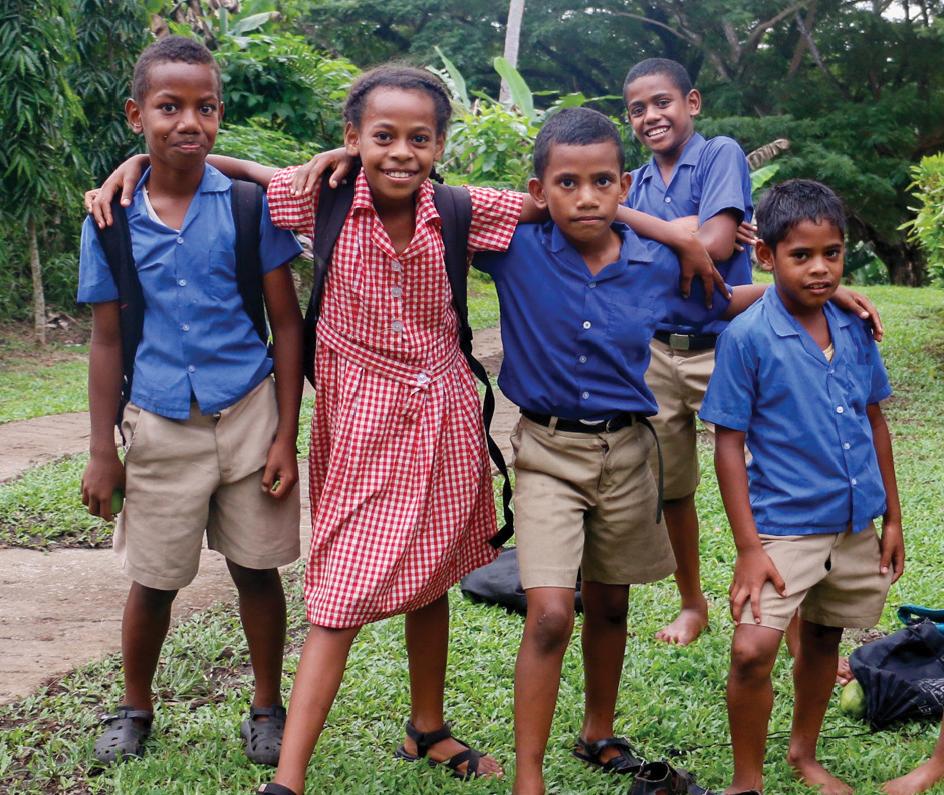
PHOTO FROM WIKI COMMONS - PUBLIC DOMAIN 19
22 10 22
0800
Donate Online or by Phone
caritas.org.nz
OUR HIDDEN EAST CAPE GEMS
TAILA BURTON-GOLLOP
Te Kaha, Tokomaru Bay, Tolaga Bay and Matawai
I am so blessed to be in a diocese that has so many wonderful churches - and even more so blessed that visiting them and photographing them is part of my job.
Recently, I (rather ambitiously) set out on a solo road trip across the diocese to visit some of the churches I hadn’t had the pleasure of seeing yet. I made my way around the East Cape in my faithful Hyundai hatchback, and was able to photograph some of the more remote churches in the Hamilton Diocese.
Some of my personal favourites were the ones tucked away and dotted around the coast - St Patrick’s, Te Kaha; Saint James, Tokomaru Bay; Sacred Heart Chapel, Tolaga Bay; St Bede’s Chapel, Matawai.

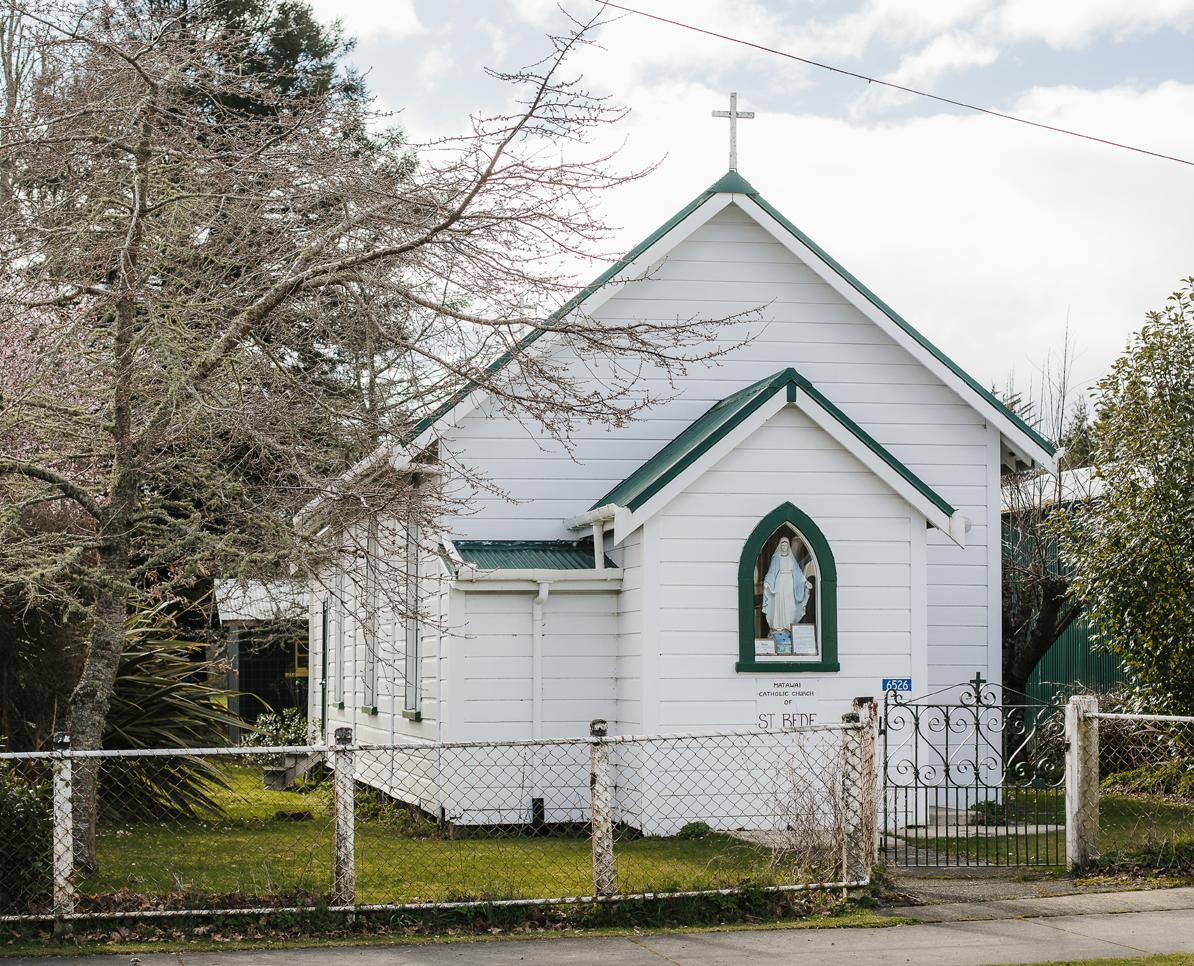
20
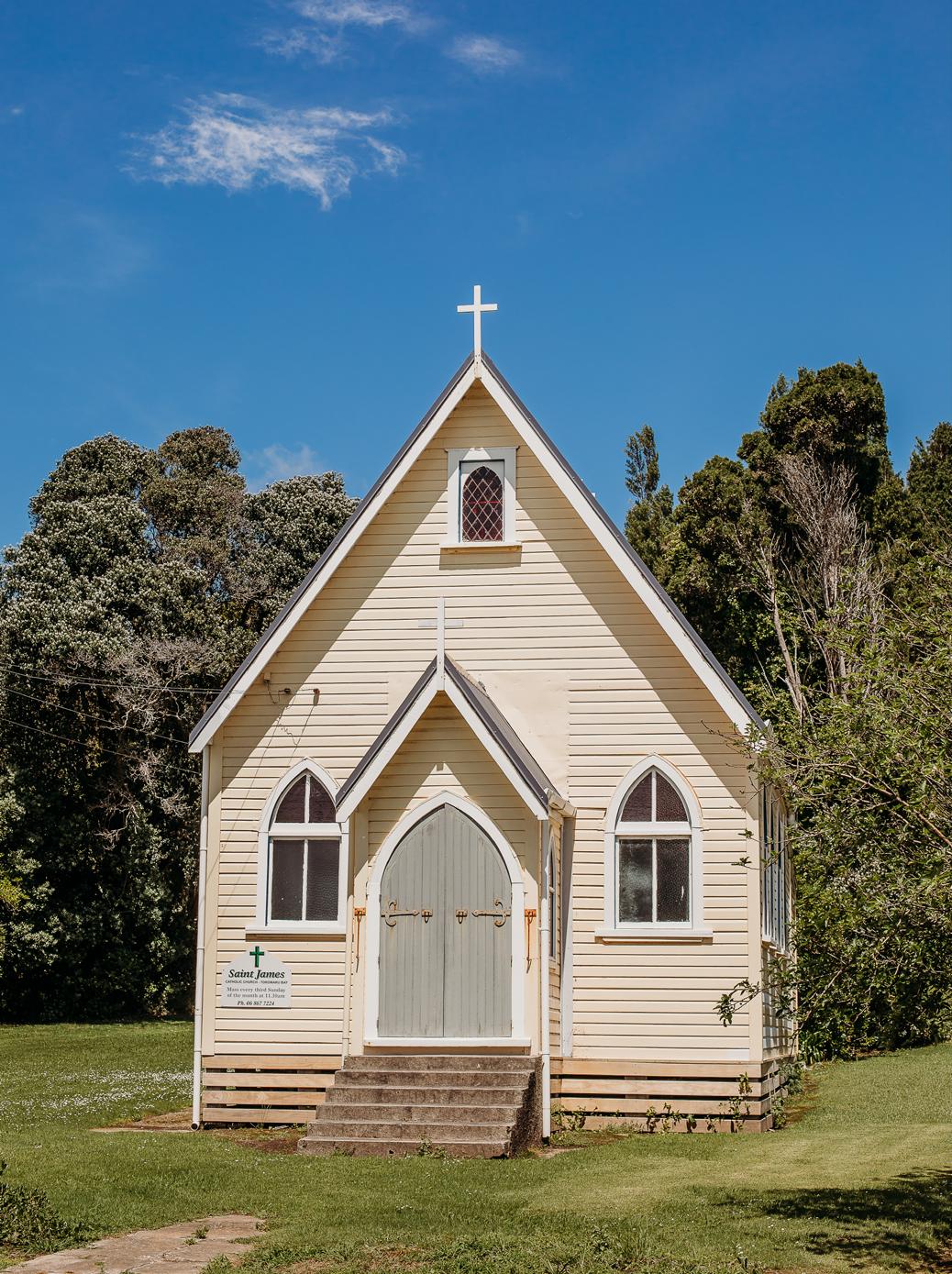
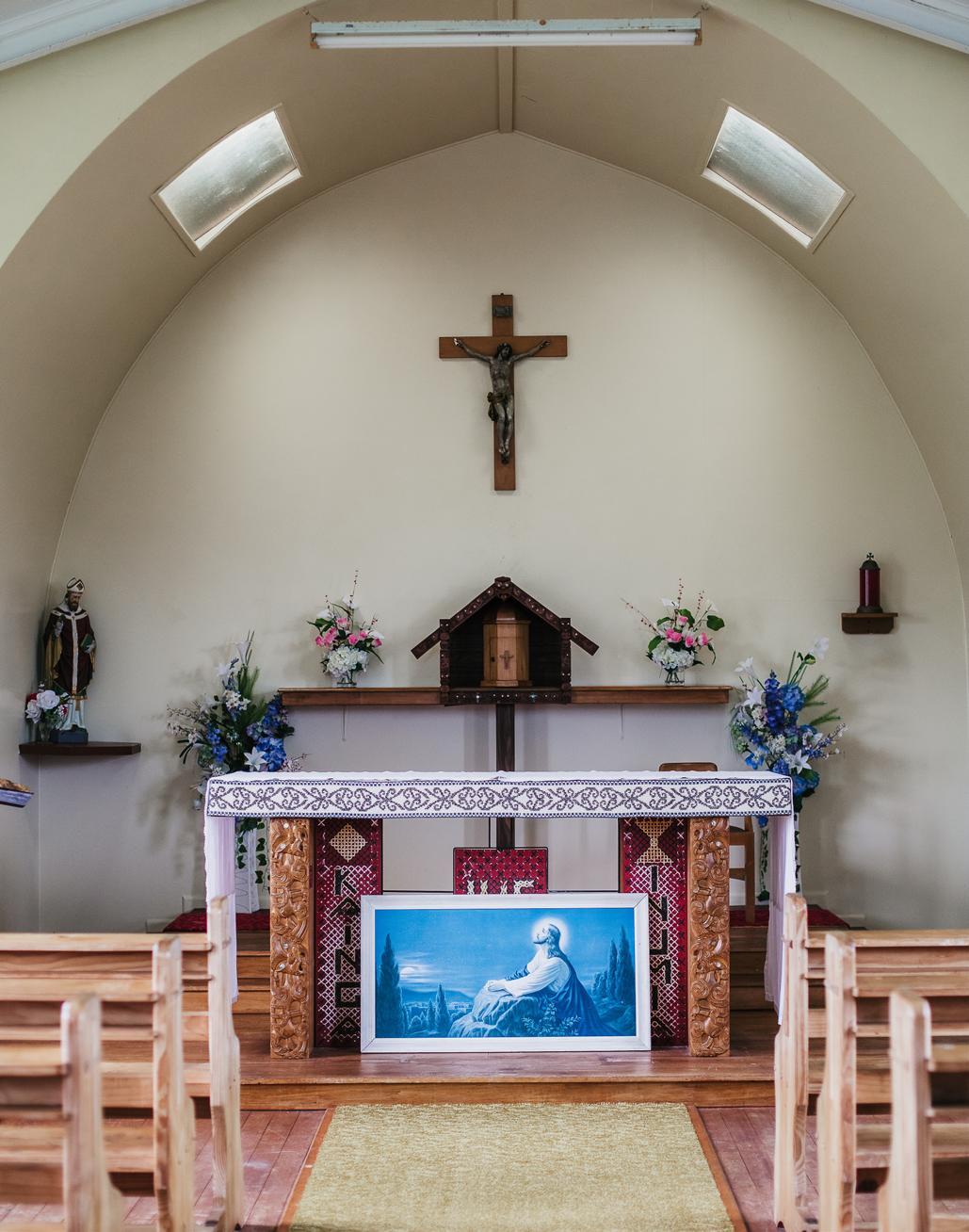
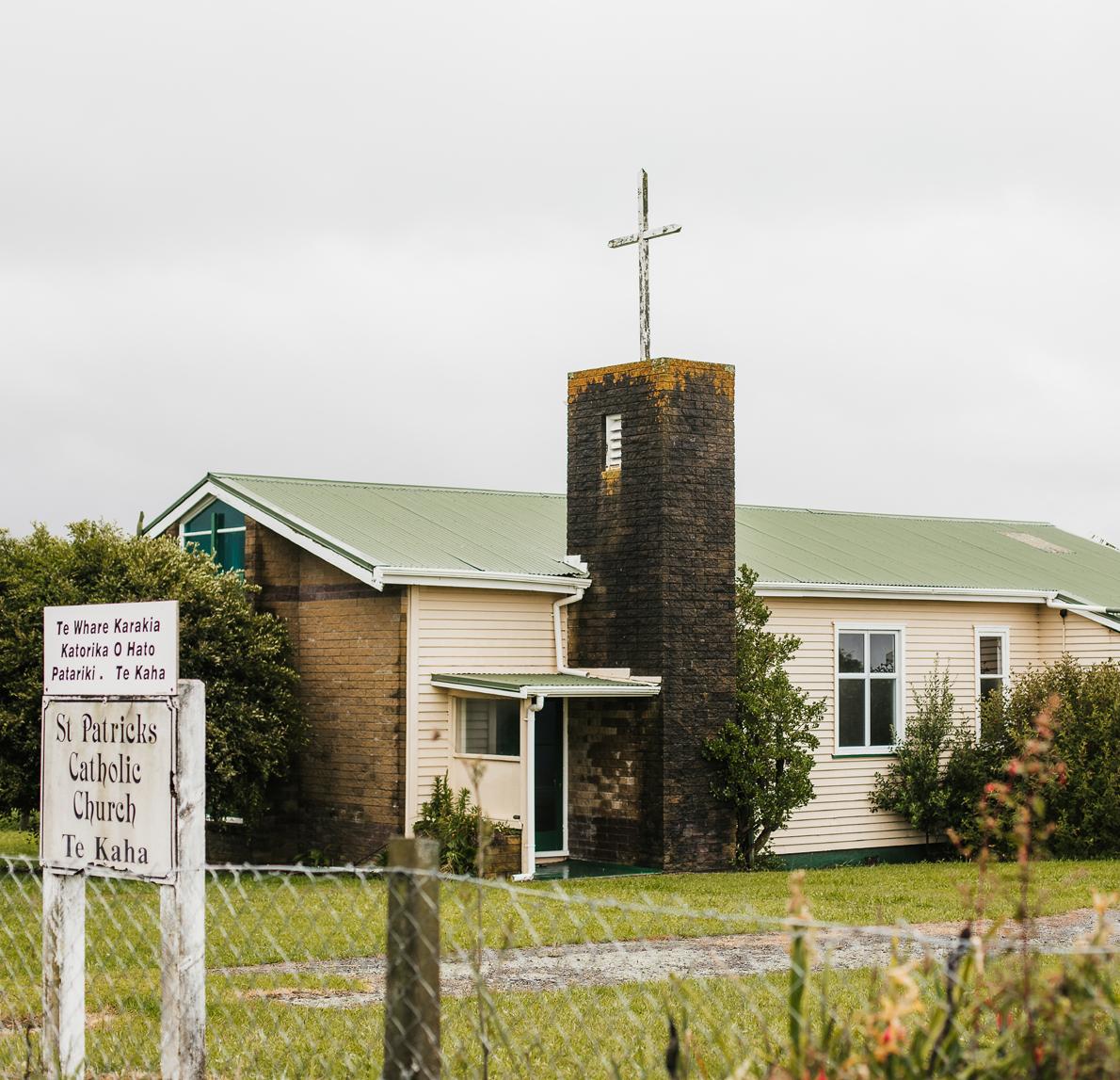

21
PHOTO FAR LEFT: ST BEDE’S CHAPEL, MATAWAI
PHOTO LEFT: SACRED HEART CHAPEL, TOLAGA BAY
ALL PHOTOS BY TAILA BURTON-GOLLOP
PHOTO ABOVE AND LEFT: ST PATRICK’S, TE KAHA LOWER LEFT: ST JAMES’, TOKOMARU BAY
A POEM AND A PRAYER
PIED BEAUTY
Glory be to God for dappled things — For skies of couple-colour as a brinded cow; For rose-moles all in stipple upon trout that swim; Fresh firecoal chestnut-falls; finches’ wings; Landscape plotted and pieced — fold, fallow, and plough; And all trades, their gear and tackle and trim.
All things counter, original, spare, strange; Whatever is fickle, freckled (who knows how?)
With swift, slow; sweet, sour; adazzle, dim; He fathers-forth whose beauty is past change: Praise him.
- Gerard Manley Hopkins
From the poems in the Liturgy of the Hours or Divine Office
THE UNIVERSAL PRAYER ATTRIBUTED TO POPE CLEMENT XI
I believe, O Lord, but may I believe more firmly; I hope, but may I hope more securely; I love, but may I love more ardently; I sorrow, but may I sorrow more deeply.
I adore you as my first beginning; I long for you as my last end;
I praise you as my constant benefactor; I invoke you as my gracious protector.
By your wisdom direct me,
By your righteousness restrain me, By your indulgence console me, By your power protect me. I offer you, Lord, my thoughts to be directed to you, my words, to be about you, my deeds, to respect your will, my trials, to be endured for you.
I will whatever you will, I will it because you will it, I will it in the way you will it, I will it as long as you will it.
Lord, enlighten my understanding, I pray: arouse my will, cleanse my heart, sanctify my soul.
May I weep for past sins, repel future temptations, correct evil inclinations, nurture appropriate virtues.
Give me, good God, love for you, hatred for myself, zeal for my neighbour, contempt for the world.
May I strive to obey my superiors, to help those dependent on me, to have care for my friends, forgiveness for my enemies.
22
May I conquer sensuality by austerity, avarice by generosity, anger by gentleness, lukewarmness by fervour.
Render me prudent in planning, steadfast in dangers, patient in adversity, humble in prosperity.
Make me, O Lord, attentive at prayer, moderate at meals, diligent at work, steadfast in intent.
May I be careful to maintain interior innocence, outward modesty, exemplary behaviour, a regular life.
May I be always watchful in subduing nature, in nourishing grace, in observing your law, in winning salvation.
May I learn from you how precarious are earthly things, how great divine things, how fleeting is time, how lasting things eternal. Grant that I may prepare for death, fear judgement, flee hell, gain paradise. Through Christ our Lord. Amen.

23
- Public Domain
NGĀ KUPU Ā-KAUPAPA KATORIKA
NATIVITY
“The occasion,” says the Concise Oxford English Dictionary, “of a person’s birth” - or as “the Nativity,” the occasion of the birth of the person of God made man. The website etymonline.com suggests the word comes from the Latin “nativus” meaning “born” and “nasci” meaning “be born” (from where we get the word “nascent” or “just coming into existence”) via the late Latin “nativitas” and the Old French “nativite.” Other words from the similar roots are natal, naive, and native. Whānautanga is the Maori word for “birth;” “Kirihimete” is the word for “Christmas.” “In that Child, in fact, God-Love is manifest: God comes without weapons, without force, because he does not want to conquer, so to speak, from the outside, but rather wants to be freely received by the human being. God makes himself a defenceless Child to overcome pride, violence and the human desire to possess. In Jesus God took on this poor, disarming condition to win us with love and lead us to our true identity.” - Benedict XVI, On the meaning of Christmas
WITNESS
“Wit” in the Old English referred to “the mind as the seat of consciousness” - to wit was to know. So “wit” + “ness” was “the state of knowing something” - and then speaking of it. This is the usual speaking-in-court-during-a-trial sense; in the Christian sense the word came to us as a translation of the Greek “martur” or “martyr” which meant, simply, “witness”: the martyrs were the ones who knew the Gospel and witnessed to the love of Christ in their lives and in their deaths.
“Modern man listens more willingly to witnesses than to teachers, and if he does listen to teachers, it is because they are witnesses.” - Pope Paul VI, Evangeli Nuntiandi: On evangelisation in the modern world
CROSS
Appeared in Old English around 1000 and arrived via a Scandinavian source as “kross” garnered from the Old Irish “cros” via the Latin “crux” which referred to a pole, stake, or cross for execution or punishment. The Latin “crux” remains in the word “crucifixion” and “the most important point under discussion as in “it’s the crux of the matter.”
“Also from Latin crux,” says etymonline.com, “are Italian croce, French croix, Spanish and Portuguese cruz, Dutch kruis, German Kreuz”; in te reo the word for cross is rīpeka. New Zealand’s national seminary is named Holy Cross, or Sancta Cruce.
“The Cross is, at the same time, both remembrance and hope. Let us always clasp it with love and let us always carry it.” - Ven. Suzanne Aubert
24
“Modern man listens more willingly to witnesses than to teachers, and if he does listen to teachers, it is because they are witnesses.”
LETTER TO EDITOR
THOUGHTS ON LAY INVOLVEMENT IN SELECTING BISHOPS
I read the article written by Fr Danvers titled Who picks bishops? (May 2022). I thought it was interesting in light of the vacant Hamilton position. It also reminded me of the work of Yves Congar, especially his book Power and Poverty in the Church.
Congar had a major theological influence on the Second Vatican Council after being approached by Pope John XXIII – this was rehabilitation after being put in the dogbox by Pius XII because of his book True and False Reforms in the Church.
In Power and Poverty in the Church he points out that, especially in the early Church before 300, lay people were very active and one was very aware of the working of the Holy Spirit through ordinary men. Over time (after Constantine) bishops started to take on more power symbols of the Roman Empire (ring, clothing etc.) and of course many of them became powerful rulers in their own right. Congar points out that the Christian tradition is not about power (potestas) but about service (ministerium). Here a message I guess for selecting candidates for bishops: the willingness and capability to act as the Servant of the Servants of God (Servus Servorum Dei).
Congar also points out the importance of lay participation in the appointment process; he quotes amongst many
others Cyprianus, Bishop of Carthago (260 AD): “As bishop I have made it a rule to make no decisions without your advice (priests and deacons) and the approval of the people.” The early Church links authority clearly with the connectedness with the community.
It is interesting (but not to the point here) to chart how slowly but surely the voice of the lay community has been drowned out by the hierarchy of the Church – the article I think could be enriched by opening a few more doors by reflecting on Congar.
Best regards
Fred Burger, Putāruru (abridged).
Content in Kete Kōrero, including letters to the editor, does not necessarily reflect the views of the Diocese of Hamilton or its apostolic administrator.

“... the Christian tradition is not about power but about service ...”
25
SAINTS & SOLEMNITIES
DECEMBER
3 - Saint Francis Xavier
4 - 2nd Sunday of Advent
6 - Saint Nicholas
7 - Saint Ambrose
8 - The Immaculate Conception of the Blessed Virgin Mary
9 - Saint Juan Diego Cuauhtlatoatzin
10 - Our Lady of Loreto
11 - 3rd Sunday of Advent (Gaudete)
12 - Our Lady of Guadalupe
13 - Saint Lucy
14 - Saint John of the Cross
18 - 4th Sunday of Advent
21 - Saint Peter Canisius
23 - Saint John of Kanty
CHRISTMAS TIME
25 - The Nativity of the Lord (Christmas Day)
26 - Saint Stephen
27 - Saint John
28 - The Holy Innocents
29 - 5th Day in the Octave of Christmas, and Saint Thomas Becket
30 - The Holy Family of Jesus, Mary and Joseph
31 - 7th Day in the Octave of Christmas, and Saint Sylvester I
JANUARY
1 - The Blessed Virgin Mary, the Mother of God
2 - Saint Basil the Great and Saint Gregory Nazianzen
3 - Tuesday of Christmas Time, and The Most Holy Name of Jesus
4 - Wednesday of Christmas Time
5 - Thursday of Christmas Time
6 - The Epiphany of the Lord
7 - Saturday after Epiphany, and Saint Raymond of Penyafort
8 - The Baptism of the Lord
ORDINARY TIME
13 - Saint Hilary
17 - Saint Anthony
20 - Saint Fabian, and Saint Sebastian
21 - Saint Agnes, virgin and martyr
24 - Saint Francis de Sales
25 - The Conversion of Saint Paul
26 - Saint Timothy and Saint Titus
27 - Saint Angela Merici
28 - Saint Thomas Aquinas
31 - Saint John Bosco
FEBRUARY
2 - The Presentation of the Lord
3 - Saint Ansgar, and Saint Blase
6 - Saint Paul Miki and companions
8 - Saint Jerome Emiliani, and Saint Josephine Bakhita
10 - Saint Scholastica
11 - Our Lady of Lourdes
14 - Saint Cyril, and Saint Methodius
17 - The Seven Founders of the Order of Servites
21 - Saint Peter Damian
LENT
22 - Ash Wednesday
23 - Saint Polycarp
26 - 1st Sunday of Lent
27 - Saint Gregory of Narek
This is not the full or official liturgical calendar for New Zealand - it’s a list of some highlights, some members of the communion of saints to pray with and be inspired by. There are various resources available online to learn more about particular saints and their feast days, including nlo.org.nz
Grant us, we pray, O Lord our God, that we, who are gladdened by participation in the feast of our Redeemer’s Nativity, may through an honourable way of life become worthy of union with him.
- Prayer after Communion, from the liturgy for Midnight Mass
26
KIDS
ANGEL
BABY
BIRTH
BETHLEHEM

DONKEY
FATHER
GIFTS
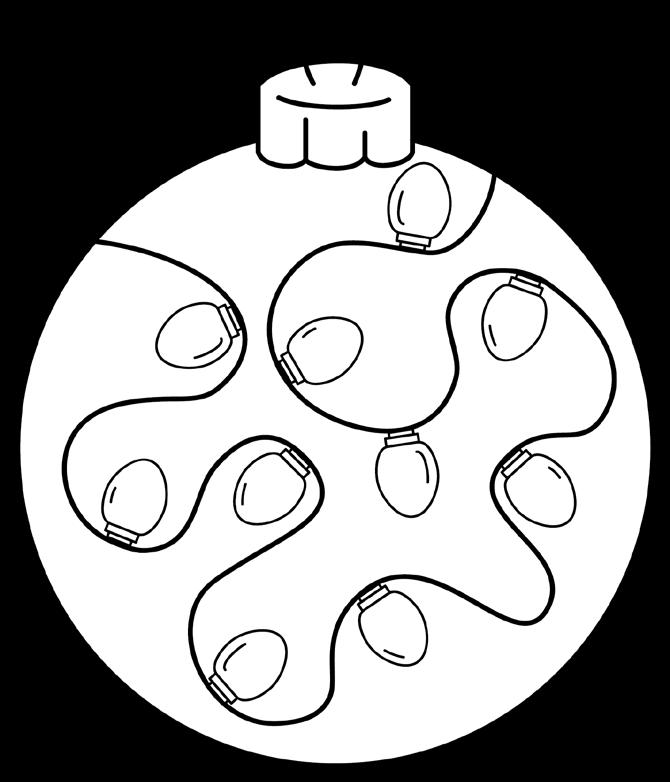


GOD
GOLD
HOLY
JESUS
JOSEPH
LORD
MANGER
MARY
PEACE
SAVIOUR
SHEPHERD
STAR

27
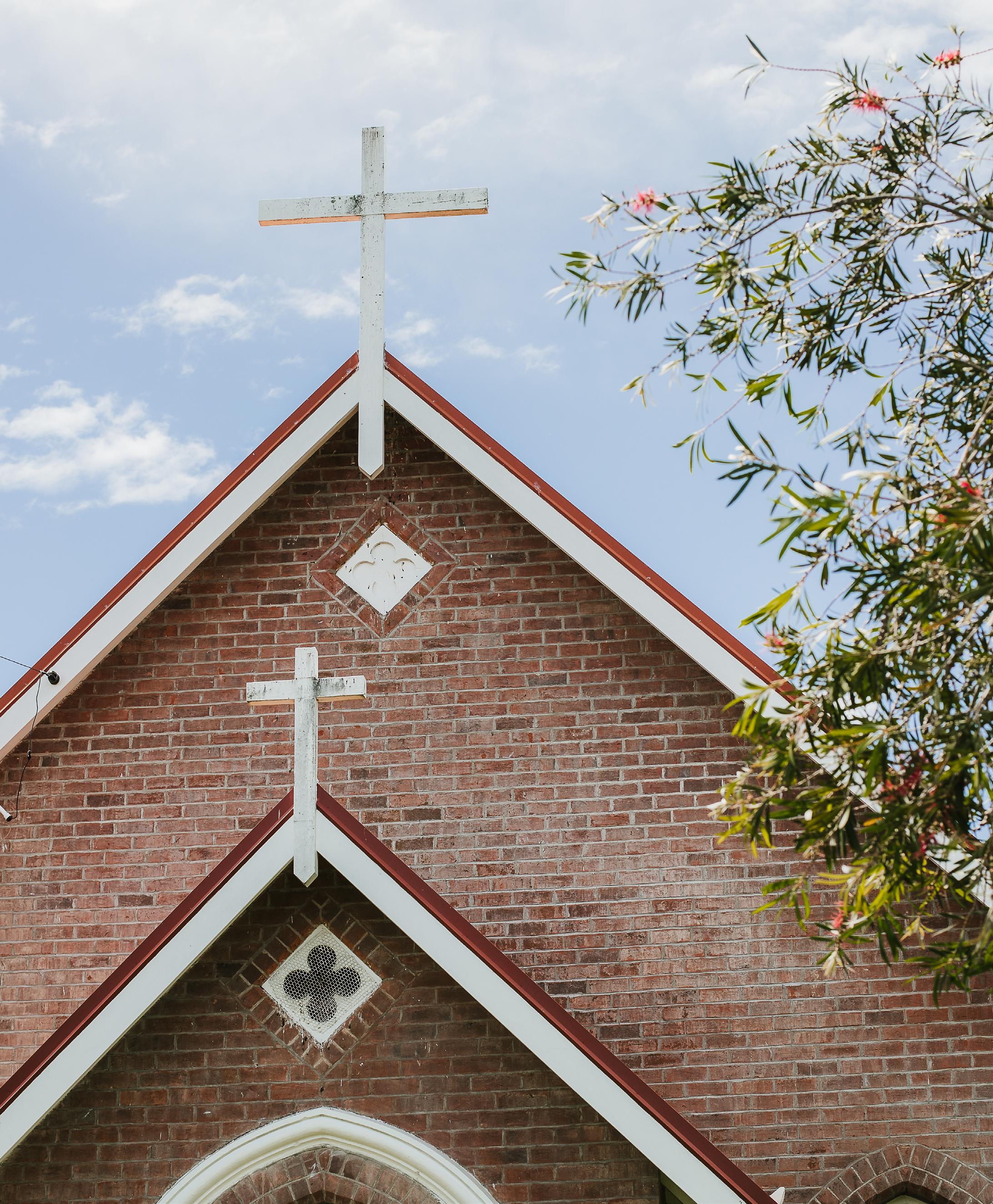
CDH.ORG.NZ












 Catechesis of the Good Shepherd is a religious education programme rooted in Scripture and liturgy.
Catechesis of the Good Shepherd is a religious education programme rooted in Scripture and liturgy.






































